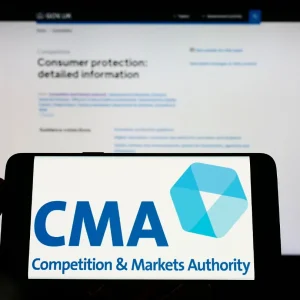
The US Federal Communications Commission (FCC) has drafted a proposal to extend the usable radio wave spectrum to include the 6 GHz band: a move that could spark accelerated development and rollout of hugely faster Wi-Fi 6 and 5G services.
At the moment the 6 GHz frequency band is only open to licensed users such as mobile carriers and government agencies. It can accommodate over double the bandwidth as the currently used 5 GHz band used by most Wi-Fi devices today. Broader use could turbo-charge the use of augmented and virtual reality, as well as ultra HD streaming.
FCC Chairman Pai said: “[Use of]… devices that connect to the internet over unlicensed spectrum has exploded. That trend will only continue. Cisco projects that nearly 60% of global mobile data traffic will be off-loaded to Wi-Fi by 2022….The FCC is aiming to increase the supply of Wi-Fi spectrum with our boldest initiative yet: making the entire 6 GHz band available for unlicensed use. By doing this, we would effectively increase the amount of spectrum available for Wi-Fi almost by a factor of five.
He added: “This would be a huge benefit to consumers and innovators across the nation. It would be another step toward increasing the capacity of our country’s networks. And it would help advance even further our leadership in next generation wireless technologies, including 5G.”
If this was to be pushed forward then it would allow devices to operate in the standard-power band of 850 megahertz and make the full 1,200 megahertz range in the 6 GHZ band open for use.
Apple is among the companies that has been pushing for liberalisation of the spectrum. As 9to5 Apple notes, “[this] it would be ideal for higher-bandwidth mobile hotspots, like tethering an iPad to a 5G iPhone. Second, this high-bandwidth link would be perfect for connecting AR/VR goggles to smartphones. Apple is believed to be working on its own smart glasses commonly referenced as Apple Glasses.”
The Wi-Fi Alliance has welcomed the FCC’s draft proposal noting that “ensuring necessary unlicensed spectrum access is critical for Wi-Fi”.
Industry has also welcomed the proposal.
Rahul Patel, general manager of connectivity and networking at Qualcomm Technologies, commented that: “We are ready to go with a full suite of Wi-Fi 6E products spanning mobile, personal computing, automotive and networking using this new spectrum, as we demonstrated in February.
“The 6 GHz band offers unmatched opportunities for Wi-Fi, unlocking the full potential and power of the next generation of high-performance devices.”
The FCC will have a vote on the proposal on April 23 to decide if the frequency band should be extend so unlicensed users can operate on it.
Here in the UK, the FCC’s counterpart Ofcom closed a consultation on opening up 6 GhZ on March 20. (It noted: “We have carried out technical analysis to assess whether Wi-Fi use could share the band with incumbent users (fixed links and satellite users) without causing harmful interference. Our studies suggest that sharing is feasible for up to 250mW indoor and 25mW outdoor unlicensed uses.”)
Wi-Fi 6
If the 6 GHz band is opened up it will be a significant boon to the emerging Wi-Fi 6 standard that has been developed in recent years. Wi-Fi 6 – also known as 802.11ax – will provide lower latency and better power consumption for devices.
A key features of Wi-Fi 6 is Orthogonal frequency-division multiple access (OFDMA). This essentially allows a router to use a single channel to interact with multiple clients and devices, for instance streaming a video conference with 30 people while also posting updates across an array of devices.
Given the incredible numbers of people working from home and teleconferencing meetings there is a clear need for greater bandwidth.
OFDMA can help with this as it enables more traffic by dividing up the channel it is using to send signals across frequency bands into frequency allocations known as resource units (RU). Each RU and channel divide gives the router another avenue to send out data packages to devices.
Wi-Fi 6 has a significantly increased bandwidth as its use 160 MHz channels, which could be greatly supplement by the opening up of the 6 GHz space.
Federated Wireless CEO Iyad Tarazi commented on the FCC’s proposal in an emailed statement to Computer Business Review, saying: “Federated Wireless applauds the work the FCC is doing in the 6 GHz band with the goal of enhancing wireless connectivity for businesses and consumers across the U.S. Making additional mid-band spectrum available is critical to widespread 5G deployments.”
“By opening up this band to unlicensed wireless services, it means additional mid-band spectrum for service providers and an accelerated timeline for WiFi 6 and 5G deployments. With our AFC spectrum controller that’s now in trials, Federated is poised to deliver high performance, interference-free connectivity while ensuring incumbent organizations currently using this band to provide microwave links for utilities, public safety, and transportation can successfully co-exist along with new users.”






